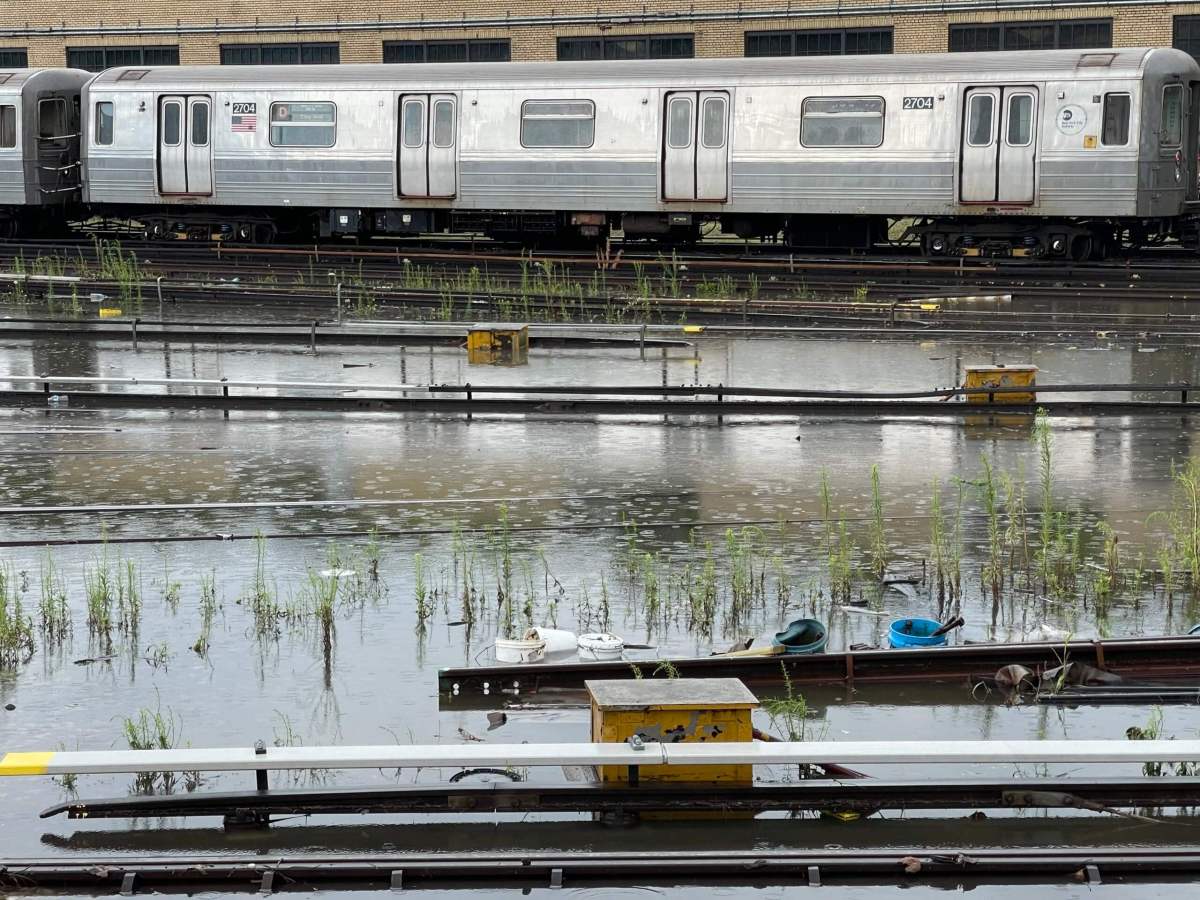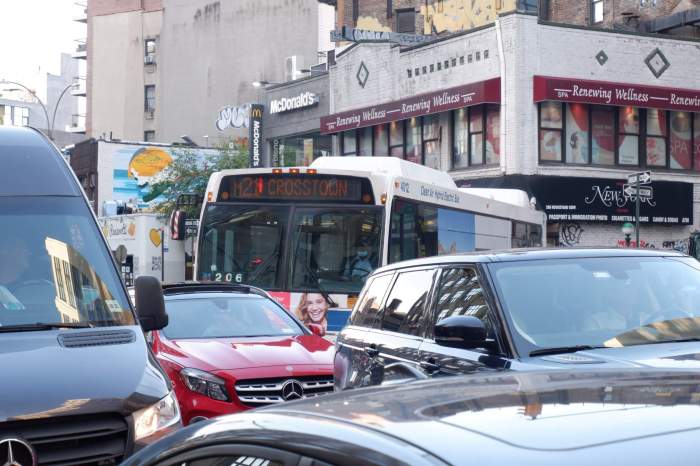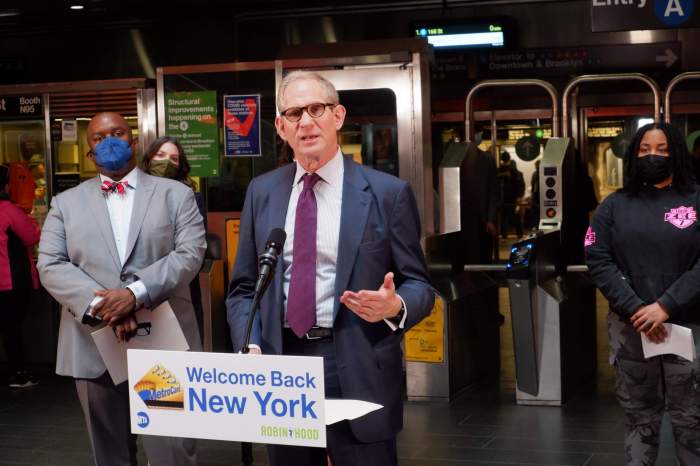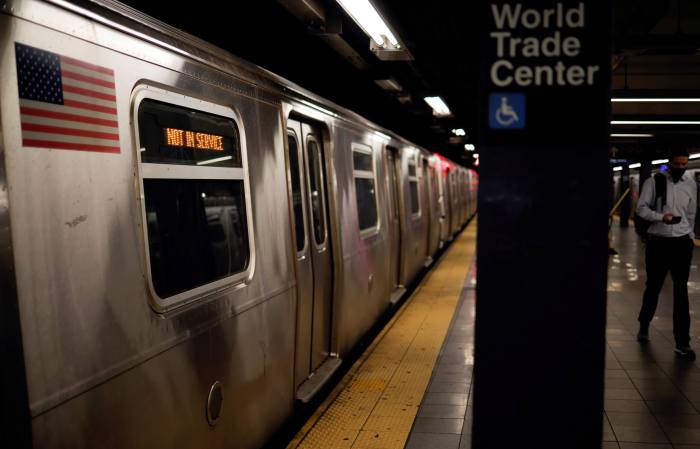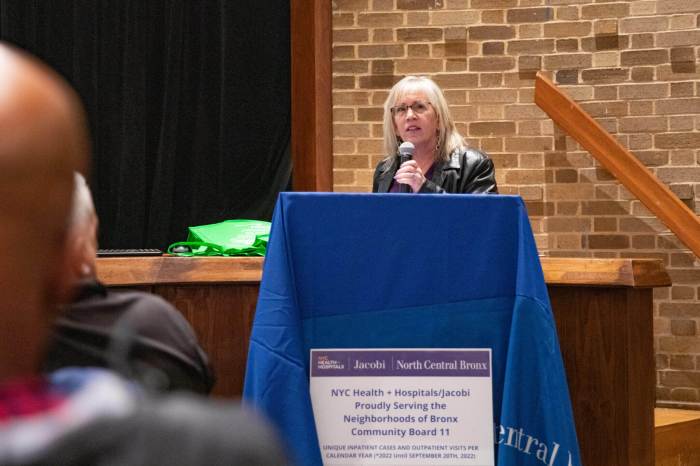The MTA must better organize flood preparations for its subway and bus system during storms, a report by the agency’s internal watchdog found.
The Metropolitan Transportation Authority needs to keep better track of thousands of flood control devices it bought after Hurricane Sandy — which transit workers have to deploy by hand across the sprawling transit network — and improve training of its employees to handle the increasingly frequent extreme downpours amid the worsening climate crisis.
“Almost 10 years after Hurricane Sandy, MTA has made great progress in fortifying its assets, however many opportunities remain for the MTA to improve upon its hurricane preparedness plans,” MTA’s Acting Inspector General Elizabeth Keating said on July 20. “Riders and NYC residents are relying on the MTA to deploy millions of dollars’ worth of flood control devices correctly and efficiently when the time comes, and a hurricane is forecast.”
The review comes on the heels of another heavy rain storm inundating parts of the city Monday night, especially in Washington Heights and in the Bronx, and MTA had to suspend subway service on the A line uptown due to flooding.
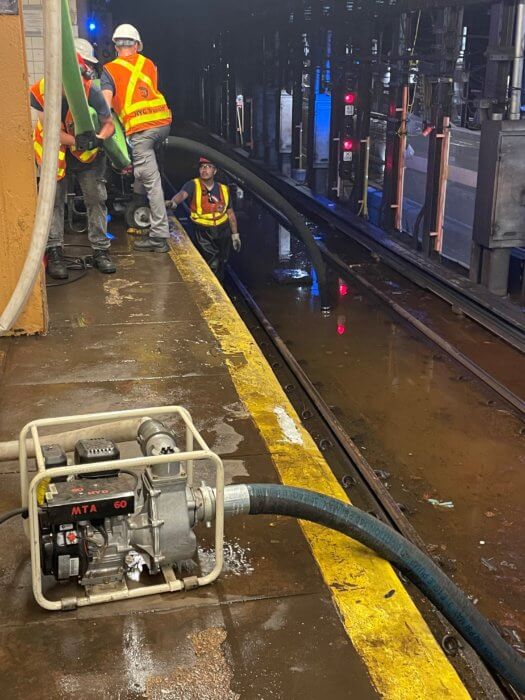
The agency and riders faced several record-breaking storms last year, such as Hurricane Ida which forced MTA to shut down all subway lines and evacuate more than a dozen stranded trains.
MTA ended up pumping out 75 million gallons of water from that storm which caused around $100 million in damages to the system.
After Sandy, MTA got $5.8 billion in grants from the federal government to repair some $5 billion in damages from the storm and invest in resiliency measures against future storms.
The agency is spending $7.6 billion fortify its transit infrastructure against floods, according to a spokesperson, but the OIG’s review found the agency needs to fine-tune its emergency response to stem the amount of water flooding the transit network.
During last year’s storms, street flooding poured into the underground system and dramatic video on social media showed water gushing from a platform manhole like a geyser and riders wading through waist-high murky water to get to their trains.
New York City Transit, which oversees the city’s subways, buses, and Staten Island Railway, bought more than 3,500 flood control devices for $350 million of the funds from Washington.
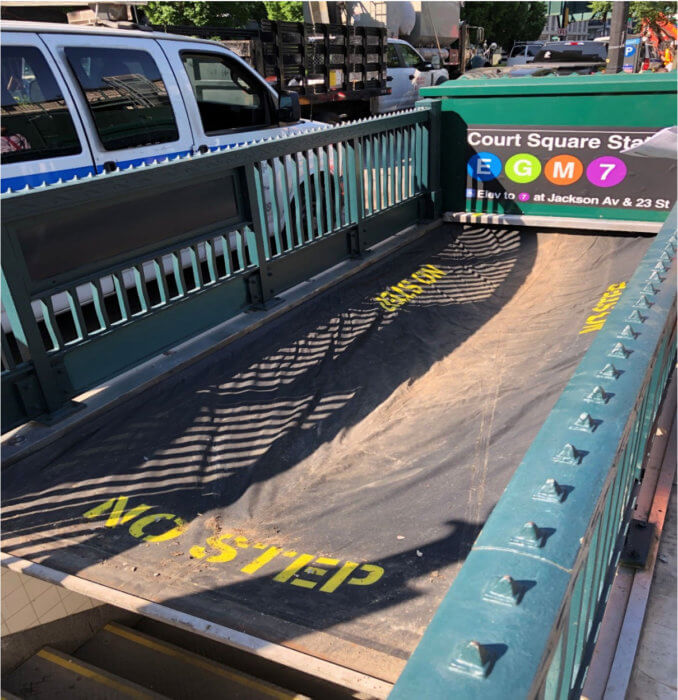
The equipment includes massive watertight doors and covers to seal off stations, sidewalk vent covers, stop logs, and hatches, all of which have to be installed ahead of a storm.
To prepare the 472-station subway system for a hurricane, it would need to be shut down to passengers about 12 hours ahead of the storm, and preparations would have to start even earlier at around 72 hours before the weather event, according to the OIG.
The probe noted that the MTA needs to keep better track of where all these devices are, how well they’re maintained, and provide employees with better training, which the investigation found to be “haphazard.”
The agency should also better lay out how long it will take to respond to floods and lay out the best routes to get to the scene and set up the devices.
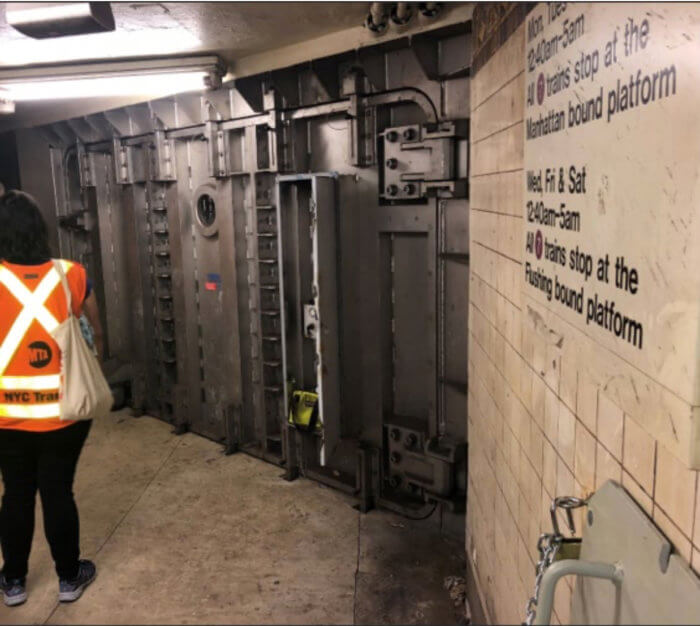
The Inspector General also recommended the MTA centralize responsibility for the storm efforts under a single leadership, however the agency responded that it wanted to keep them separate among departments like the subways or the buses because they require very different measures and preparations.
“This report highlights the substantive steps NYC Transit has already taken in partnership with MTA Construction & Development to address a complex, yet vital task,” said MTA spokesperson Michael Cortez in a statement. “NYC Transit is uncompromisingly committed to resiliency, investing $5.8 billion to harden the transit system against coastal flooding.”



